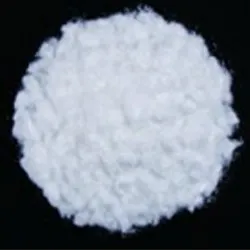
Exploring the Benefits and Uses of Sweet Preservatives in Food Preservation
The Sweet World of Preservatives A Dive into the World of Sweet Preservatives
In recent years, the food industry has become increasingly complex, with an ever-growing range of ingredients penetrating our everyday meals. Among these additives, preservatives have taken center stage, acting as guardians of our food. They extend the shelf life of products, protect against spoilage, and preserve the taste, aroma, and texture of food. Within this broad category, sweet preservatives deserve special attention. These ingredients not only enhance flavors but also maintain the sweetness of foods over time.
The importance of sweet preservatives can be felt in various food products, especially in jams, jellies, and syrups. These sweet delights often rely on preservatives like sugar itself, sodium benzoate, and potassium sorbate to inhibit the growth of mold, yeast, and bacteria. Let’s delve deeper into a few common sweet preservatives and their roles in the culinary world.
Sugar The Sweetest Preservative
Historically, sugar has been utilized as a preservative for centuries. In fact, the process of preserving fruits in syrup or creating jams dates back to ancient civilizations. The high osmotic pressure created by sugar inhibits the growth of microorganisms, effectively preserving the product. Sugar also adds a delightful sweetness that enhances the flavor profile.
The preservation method using sugar often involves cooking the fruit, caramelizing the sugars, and then sealing it in jars. The combination of acidity and high sugar content creates an environment where harmful microorganisms find it challenging to thrive. This age-old method has stood the test of time, proving that simplicity can be incredibly effective.
Sodium Benzoate A Modern Solution
In today’s fast-paced world, food manufacturers have turned to chemical preservatives like sodium benzoate for their efficacy. Sodium benzoate, derived from benzoic acid, is one of the most widely used preservatives. It works by creating an acidic environment in food products, thus protecting them from mold and yeast.
Typically found in beverages, salad dressings, and fruit products, sodium benzoate is valued for its ability to maintain flavor and freshness. However, it’s important to note that the effectiveness of sodium benzoate is maximized in acidic environments, and its usage is subject to specific regulations to ensure safety.
sweet preservative

Potassium Sorbate Another Effective Preservative
Another common sweet preservative is potassium sorbate, a salt derived from sorbic acid. It is widely used to inhibit mold and yeast growth in food products, helping maintain the quality and safety of various sweet items.
Potassium sorbate is particularly popular in baked goods and sweet foods due to its low toxicity and effectiveness at low concentrations. Like sodium benzoate, potassium sorbate is often utilized in conjunction with other preservatives to create a synergistic effect, allowing for broader protection against spoilage.
Natural Alternatives
With a growing awareness of health and wellness, consumers have become increasingly interested in natural preservatives. Ingredients such as honey, vinegar, and lemon juice have regained popularity as sweetening agents that also exert preservative qualities. Honey, for example, boasts natural antimicrobial properties due to its low water content and high acidity.
Moreover, many fruit-based products now feature natural preservatives that appeal to health-conscious individuals seeking to avoid synthetic additives. Despite their effectiveness, these natural alternatives often require proper handling and storage to achieve the desired preservation effects, balancing quality and health benefits.
Conclusion Sweet Preservation in the Modern Age
As we explore the fascinating world of sweet preservatives, it becomes evident that these ingredients play a multifaceted role in our food systems. From traditional methods involving sugar to modern-day chemical alternatives, preservatives have evolved to meet the demands of a diverse and growing global population.
The challenge lies in achieving the right balance between flavor, sustainability, and consumer health. As the food industry continues to innovate and understand the implications of additives, sweet preservatives will undoubtedly remain a significant area of research and development. Informed consumers who appreciate the science behind their food choices are essential for driving the future of food preservation, ensuring that sweetness and safety can coexist harmoniously on our plates.
-
Pure Sodium Dichloroisocyanurate Dihydrate | Powerful DisinfectantNewsAug.29,2025
-
Industrial Chemicals: Quality & Purity for Every IndustryNewsAug.28,2025
-
Nitrile Rubber Honoring Strict Production StandardsNewsAug.22,2025
-
Aspartame Ingredients Honoring Food Safety ValuesNewsAug.22,2025
-
Fertilizer for Balanced Plant NutritionNewsAug.22,2025
-
Cyanide Gold Processing with High Purity AdditivesNewsAug.22,2025
-
Formic Acid in Textile Dyeing ApplicationsNewsAug.22,2025
Hebei Tenger Chemical Technology Co., Ltd. focuses on the chemical industry and is committed to the export service of chemical raw materials.
-

view more DiethanolisopropanolamineIn the ever-growing field of chemical solutions, diethanolisopropanolamine (DEIPA) stands out as a versatile and important compound. Due to its unique chemical structure and properties, DEIPA is of interest to various industries including construction, personal care, and agriculture. -

view more TriisopropanolamineTriisopropanolamine (TIPA) alkanol amine substance, is a kind of alcohol amine compound with amino and alcohol hydroxyl, and because of its molecules contains both amino and hydroxyl. -

view more Tetramethyl Thiuram DisulfideTetramethyl thiuram disulfide, also known as TMTD, is a white to light-yellow powder with a distinct sulfur-like odor. It is soluble in organic solvents such as benzene, acetone, and ethyl acetate, making it highly versatile for use in different formulations. TMTD is known for its excellent vulcanization acceleration properties, which makes it a key ingredient in the production of rubber products. Additionally, it acts as an effective fungicide and bactericide, making it valuable in agricultural applications. Its high purity and stability ensure consistent performance, making it a preferred choice for manufacturers across various industries.





